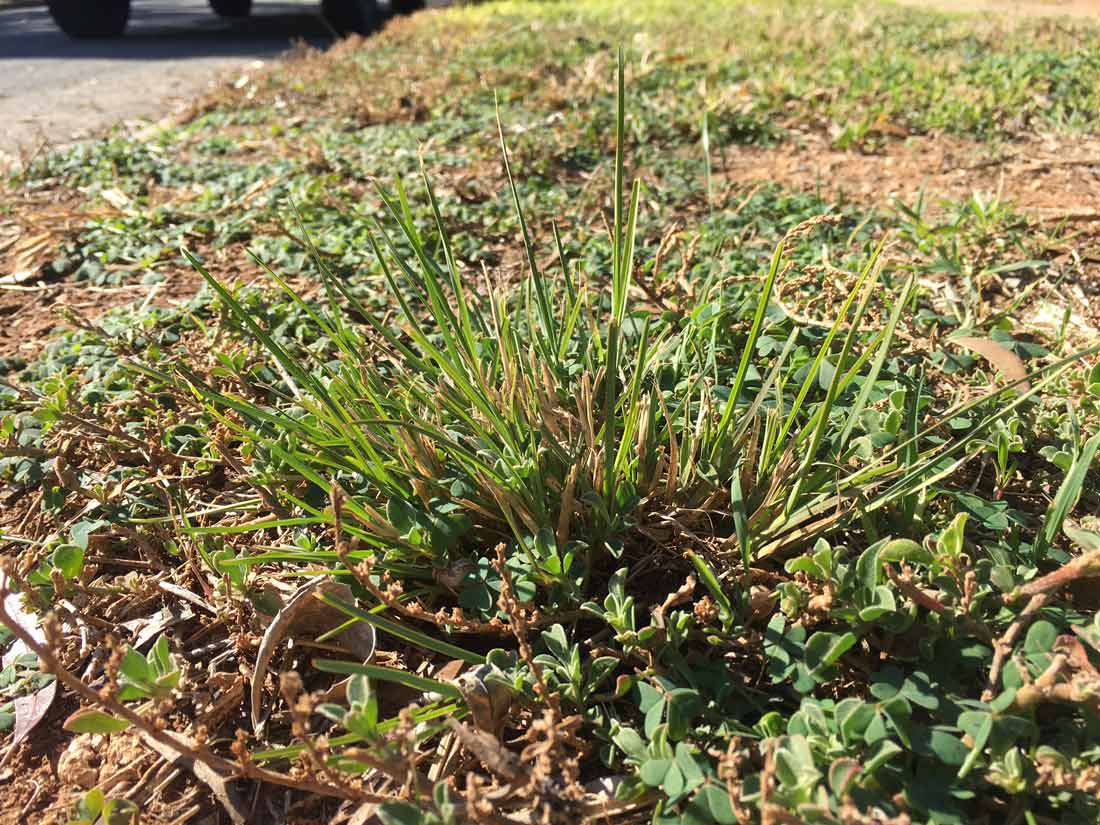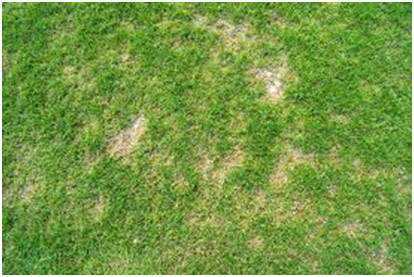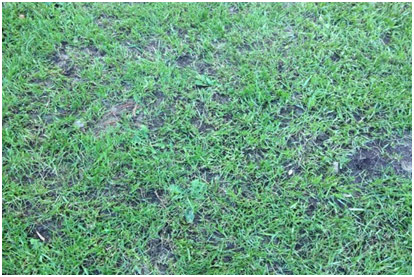Lawn care
Fixing Lawn Issues

With a lawn the aim is to have it visually looking lush, green and manicured. From time-to-time we may have issues that stop our lawn from looking healthy, with problems such as lawn burn from dog urine, patchy lawn, thinning lawn, or difficulty with growing grass in shady areas.
Fertilising, weed control and watering are all essential components in your lawn-care program and this section gives an overview of the problems and solutions for your lawn issues.


Lawn Burn From Dog Urine

Dead spots from your dog in your lawn are most noticeable on grass that is green or actively growing. Dog spots vary in diameter and are round patches from 100mm to 200mm, dependent on your dog’s size. The patches have dead grass in the middle, with a green ring of taller grass around the perimeter. Dog urine contains high levels of salt, acids and nitrogen. Subsequent rain or watering dilutes the concentration of urine and spreads the nitrogen, fertilising the perimeter which makes it greener.
To fix the lawn burn, spraying water over the areas where your dog urinates will minimise future damage because the urine is diluted, but vigilance becomes a must.
Replanting new lawn or re-seeding is the only solution for damaged lawn. Firstly thoroughly soak the area with lots of water, then add some topsoil and spread new lawn seed over the area.
Patchy Lawn

Autumn is one of the best times to be repairing bald patches caused by children or pets and you’ll have thick healthy grass in Spring. Materials needed is topsoil and lawn seed.
You’ll need to chose seeds that suit your lawn and its environment:
- Seed with ryegrass (hard-wearing lawns)
- Blended fine grass seed (premium lawns)
- Seed mixture (lawn in shade)
Repairing the patch is done by removing any debris with a rake or blower-vac, scatter a layer of topsoil, add seeds (spread evenly and refer to instructions on the pack for application rates), add a thin layer of topsoil to protect the seeds from birds and water your seeds (refer to packaging for instructions).


Thinning Lawn

If your lawn has a thin appearance overall and shade isn’t the cause, damage could be due to inadequate feeding and watering. Having your lawn aerated, fertilised and seeded with a lawn thickening product could become part of your lawn-care program.
If the thin areas are at random locations in your lawn, the patches could be due to lawn beetles, crickets, mites, worms or other grubs. A suitable pest treatment combined with selective re-seeding will rid your grass of these pests and help your lawn to recover.
Growing Grass In Shaded Areas

All lawn types prefer full sun for their growing environment, but some varieties are more shade tolerant than others. The grass with the highest shade tolerance is Buffalo (70%), followed by Zoysia (40%), Rhizomatous Tall Fescue (30%), then the lowest with Couch (10%) and Kikuyu (10%). The percentages used are the approximate amount of time the lawn is in shade each day.
The best way to grow grass in shaded areas is to match the lawn type with the growing environment. Having low tolerancefor-shade grass types in shaded areas will not look healthy, they will become quite sparse in their cover and potentially not survive long term.
Shaded areas for your lawn can be improved by regularly pruning trees, bushes and other foliage to allow the maximum amount of sunlight to reach your lawn. Cut your lawn higher to maximise the surface area of your lawns leaves for receiving sunlight and fertilise regularly.
If managing your lawn in your shaded area is having limited success, changing your lawn type to a more shade tolerant grass such as Buffalo may be worth considerating. If you decide the shade is too much for your lawn, converting the area to garden may be a great alternative.


Your local Lawn & Garden care experts
GREENKOMANDERS © 2017 | ABN 86 007 734 447

